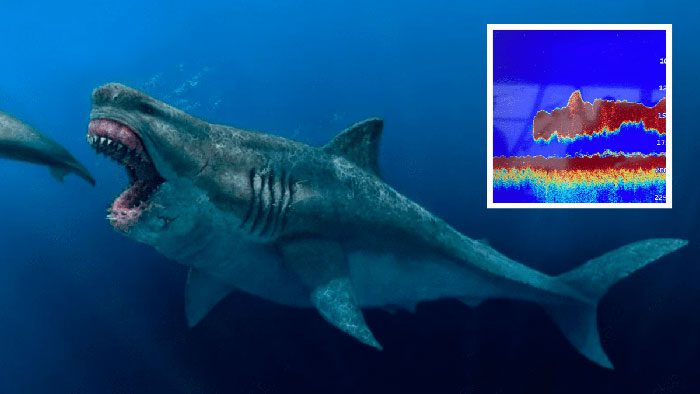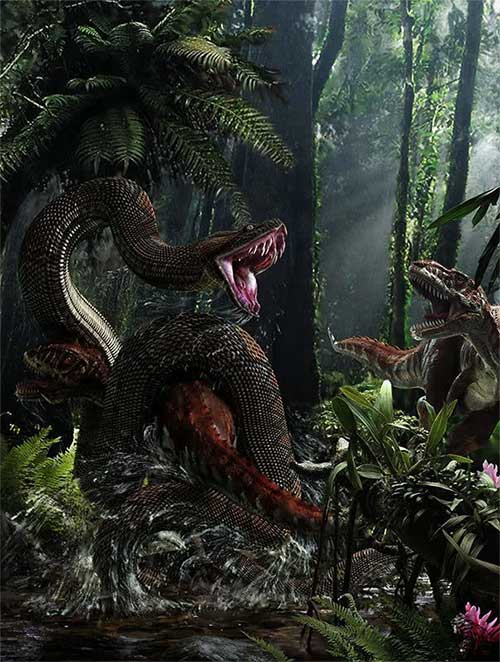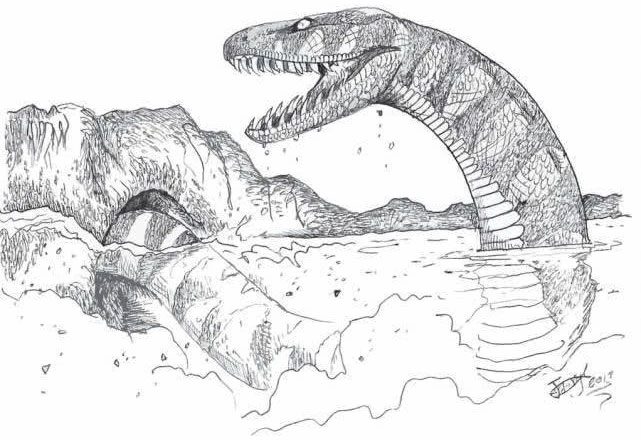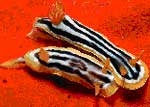This is the match that many have been waiting for, the clash between one of the largest animals to ever roam the Earth.
Before this imagined battle begins, let’s analyze the statistics of these two colossal creatures. Megalodon is one of the largest predators to have ever existed on our planet. These sharks roamed the oceans 20 million years ago but went extinct around 3.6 million years ago.
Growing up to 18 meters in length—three times the size of the largest great white shark ever recorded—the Megalodon shark would possess a massive jaw measuring 3 meters wide, housing around 276 teeth. Accordingly, its bite force was strong enough to crush an ordinary car.

Megalodon (Otodus megalodon) is primarily known in the fossil record for its gigantic teeth, which have existed for millions of years, long after its cartilaginous skeleton decomposed into nothingness. It is from these massive teeth, about the size of your hand, that scientists estimate the size of this monstrous creature, with a jaw large enough for a person to stand inside while still having space.
Meanwhile, the Titanoboa lived during the Paleocene epoch and went extinct 56 million years ago. After the extinction of the dinosaurs, Titanoboa became one of the top terrestrial predators.
With an average length of 13 meters and weighing about 1.25 tons, this snake could roam anywhere without fear of any creature.
In fact, both the Titanoboa and the Megalodon thrived in warm climates. However, Megalodon lived in the ocean while Titanoboa slithered in dense forests. Therefore, this battle could not occur naturally and can only be conducted through human imagination and comparison.

Titanoboa, the largest snake known to humanity.
The excellent sense of smell of Megalodon could detect the presence of Titanoboa. Alternatively, it could use electroreception to sense the electric fields generated by Titanoboa. This ability might allow the Megalodon to gain the upper hand and attack first.
However, the Titanoboa is not without its advantages; this cold-blooded creature has a few special tricks. Titanoboa can ambush its prey by hiding in the water or among the foliage and waiting for the perfect moment to strike, which could take days.

Scientists still cannot explain why this snake species grew to such a massive size, but many speculate that during the Paleocene, the area now known as Colombia was a warm tropical region with an average temperature of 32 degrees Celsius. The warm climate of the Earth during that period allowed cold-blooded snakes to attain larger sizes than their relatives today.
If the Megalodon swims just below, the Titanoboa could strike before the shark realizes it has been attacked. And as the Megalodon thrashes about, the teeth of the Titanoboa would act like meat hooks, digging deeper into the body of this gigantic shark.
Next, the Titanoboa would constrict its prey, attempting to suffocate the Megalodon. With a pressure of over 276 kilopascals (400 psi), the Titanoboa could crush the Megalodon.
But sharks do not have lungs. They have gills that absorb oxygen from the water. And while the jaws of that massive snake can expand up to 1.8 meters, it is not enough to swallow this aquatic monster whole.
The Titanoboa would need to crush the Megalodon and collapse its organs or block its gill openings. If the snake could pull the shark into shallow water, the battle would end with Titanoboa as the victor.

Although the skeleton of Megalodon may not be in the fossil record, their teeth are abundant. These giant monsters lived from 23 million to about 3.6 million years ago, dominating the oceans. Sharks continuously shed and regrow teeth throughout their lives. A Megalodon has up to 276 teeth in its mouth at any given time.
However, in deeper waters, the Megalodon could launch a high-speed attack from below. This fierce shark would use its deadly jaws to incapacitate and neutralize the Titanoboa, violently shaking the Titanoboa’s body. In an instant, those razor-sharp teeth would slice the colossal snake in half.
The outcome of this battle between the two giants would depend on which contender finds their opponent first. It would be a test of patience and raw power between these colossal creatures. But since these monsters did not live during the same period, we will never know exactly how this match would unfold.





















































